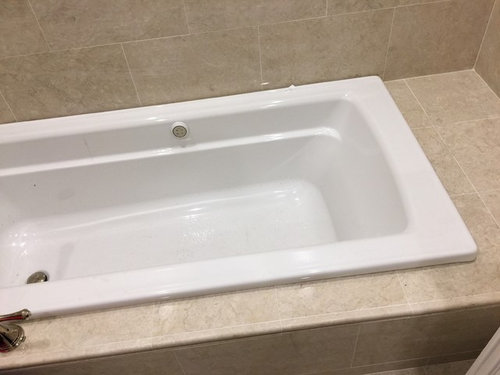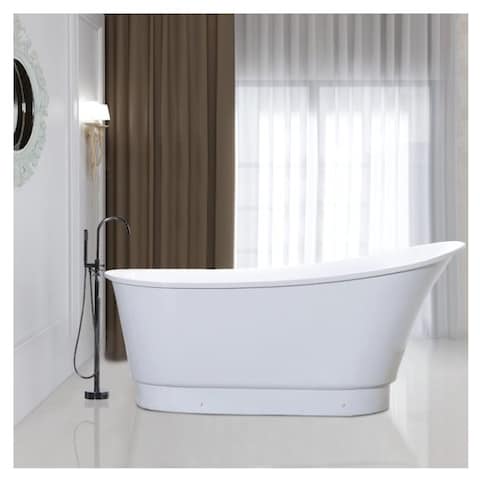Every person has their own unique conception when it comes to A Step-by-Step Guide to Installing a Bathtub.

Mounting a bathtub isn't precisely rocket science, but it does need solid plumbing, carpentry, and in some cases, tiling skills. Replacing an old bathtub with a brand-new one is additionally a moderately hard project. If the old bathtub is easily easily accessible, the task can relocate speedily; if you need to open a wall surface to get rid of the old tub as well as place the brand-new bathtub, the task is much harder. In either situation, the task is within a residence handyman's skills, although you will need a helper to leave the old tub as well as embeded in the brand-new one. See to it you have actually certified on your own for the work and also fit trying it. As opposed to working with a service provider to take control of a halfway-completed task, it is far better to consider utilizing one prior to you begin. Chances are you may need an expert plumber to make tube connections.
This post will assist you mount a brand-new bath tub in your washroom if you have actually currently gotten a new tub and do not need to transform the arrangement of your previous water pipes.
Your devices and product list ought to consist of the following:
Removing Old Taps
If you need to replace old taps with new ones as a part of your setup, after that the first thing you need to do is separate the water supply. After doing so, turn on the taps to drain any water remaining in the system. The process of removing the existing faucets can be fairly bothersome as a result of the limited access that is typically the situation.
Utilize a container wrench (crowsfoot spanner) or a tap tool to undo the nut that connects the supply pipes to the faucets. Have a towel all set for the continuing to be water that will certainly come from the pipes. Once the supply pipelines have actually been eliminated, utilize the very same tool to loosen the nut that holds the faucets onto the bath/basin. You will need to quit the single taps from turning throughout this procedure. As soon as the faucets have been eliminated, the holes in the bath/basin will certainly need to be cleaned of any type of old sealing substance.
Prior to carrying on to fit the brand-new faucets, compare the pipe links on the old faucets to the brand-new faucets. If the old taps are longer than the new taps, then a shank adapter is needed for the brand-new faucets to fit.
Suitable New Touches
If the tails of the new faucets are plastic, then you will certainly require a plastic adapter to avoid damage to the thread. One end of the port fits on the plastic tail of the faucet and the other end supplies a link to the existent supply pipelines.
If you require to fit a monobloc, after that you will certainly require decreasing couplers, which links the 10mm pipeline of the monobloc to the standard 15mm supply pipeline.
Next, place the tap in the placing opening in the bath/basin making certain that the washing machines remain in location between the tap and the sink. Safeguard the tap in place with the maker offered backnut. When the tap is securely in position, the supply pipelines can be attached to the tails of the faucets. The taps can either be connected by utilizing corrugated copper piping or with normal faucet connectors. The previous type ought to be connected to the faucet finishes first, tightening up only by hand. The supply pipes can later be attached to the various other end. Tighten both ends with a spanner after both ends have been linked.
Mounting the Bath tub
Using the two wooden boards under its feet, put the tub in the called for placement. The wood boards are useful in evenly spreading the weight of the bathtub over the area of the boards instead of focusing all the weight onto 4 tiny factors.
The following goal is to guarantee that the bathtub is leveled all round. This can be achieved by checking the level as well as adjusting the feet on the bathtub till the level reads degree.
To install taps, fit the bottom of the furthest adaptable faucet adapter to the appropriate supply pipe by making a compression join; then do the exact same for the various other tap.
Switch on the water system and check all joints and new pipework for leaks as well as tighten them if necessary. Fill up the tub as well as additionally check the overflow electrical outlet and the typical outlet for leaks.
Ultimately, fix the bath paneling as defined in the producer's instruction manual. Tiling and sealing around the tub must wait until the bath tub has been made use of at least once as this will settle it into its final position.
Getting ready for the Setup
First of all, the sustaining framework supplied with the bath should be fitted (if required) according to the manufacturer's guidelines. Next off, fit the taps or mixer to the tub. When fitting the tap block, it is very important to make certain that if the faucet comes with a plastic washer, it is fitted in between the bath and also the taps. On a plastic bath, it is likewise reasonable to fit a sustaining plate under the faucets unit to prevent strain on the tub.
Fit the versatile faucet ports to the bottom of the two taps using 2 nuts and also olives (occasionally supplied with the tub). Fit the plug-hole electrical outlet by smearing mastic filler round the sink outlet hole, and then pass the electrical outlet via the hole in the bathroom. Use the nut provided by the supplier to fit the plug-hole. Analyze the plug-hole electrical outlet for an inlet on the side for the overflow pipe.
Next off, fit the end of the versatile overflow pipeline to the overflow electrical outlet. After that, screw the pipe to the overflow face which should be fitted inside the bathroom. See to it you make use of all of the provided washers.
Link the catch to the bottom of the waste outlet on the tub by winding the string of the waste electrical outlet with silicone mastic or PTFE tape, and screw on the trap to the electrical outlet. Attach the bottom of the overflow tube in a similar manner.The bath must currently prepare to be suited its last position.
Tiling Around the Bathtub
In the area where the bath meets the ceramic tile, it is needed to secure the joins with a silicone rubber caulking. This is necessary as the installation can relocate enough to break a rigid seal, causing the water to penetrate the wall in between the bathroom and the tiling, causing difficulties with dampness and feasible leakages to the ceiling listed below.
You can pick from a variety of coloured sealants to blend in your fixtures as well as fittings. They are offered in tubes as well as cartridges, and are capable of securing spaces up to a width of 3mm (1/8 inch). If you have a bigger space to fill up, you can load it with spins of soaked paper or soft rope. Bear in mind to always fill the bath tub with water before securing, to permit the activity experienced when the tub remains in usage. The sealant can fracture fairly early if you do not take into account this movement prior to sealing.
Additionally, ceramic coving or quadrant tiles can be made use of to border the bath or shower tray. Plastic strips of coving, which are easy to use and also cut to size, are additionally quickly readily available on the marketplace. It is recommended to fit the floor tiles utilizing waterproof or water resistant glue as well as cement.
Bathtub Installation
How Important Is A Bathtub To Your Home?
High-quality baths, showers, and other bathroom updates are necessary when considering a smart investment in your home. It’s a room that you go to every day and one that is constantly being used by guests.The bathroom is one of the top trafficked rooms in a home and also one of the most valuable in terms of home resale.
Install Piping Before Tub
You will be using your existing drain and waste vent system, but pipes required include the hot and cold water supply lines and a pipe leading to a shower head. A mixing valve and shower head are also needed. Air chambers may be required.
Position the Tub
Lower the tub into place so that the continuous flange fits against the wall studs and rests on 1’x4' or 2’x4' supports. Anchor the tub to the enclosure with nails or screws inserted through the flanges into the studs.
NOTE: Remember, bathtubs and shower stalls may require support framing. A bathtub filled with water is extremely heavy, so check building codes and framing support before installing the tub.
Assemble Drain Connections
Assemble the bathtub drain connections by connecting the tub overflow with the tub drain above the trap, not beyond it. The trap will have a compression fitting that screws over the arm of the overflow assembly.
Place a Pipe For the Shower Head
First, locate a brass female threaded winged fitting and attach it to a framing support via a screw or a nail. Then run a pipe up the wall for the shower head. Sweat or solder the other side of the brass fitting to the top of the pipe.
Attaching Hot and Cold Water Lines
Attach your water lines for both hot and cold by sweating these directly into the hot and cold ports of the mixing valve. The mixing valve will be how water enters the tub’s system, not by the pipes themselves.
Install the Spout
Extend a piece of 1/2 inch pipe, or whichever length is specified in the manufacturer’s instructions, for the tub spout. Sweat on a male threaded fitting at the end of the pipe or use a brass nipple of the proper length and a 1/2 inch cap.
NOTE: At this point you should have your rough-in plumbing work inspected before proceeding further.
Check For Leaks
Restore the water pressure and check the drain connection and the supply pipes for any sign of leaking.
estore the Bathroom Wall
Replace the wall with moisture-resistant drywall as a base for your wall covering. Seal the joints between the wall and your new tub with silicone caulk as protection against water seepage.
https://www.berkeys.com/2016/12/02/bathtub-installation-dallas/

I'm certainly very occupied with How to Install a Bathtub: Install an Acrylic Tub and Tub Surround and I really hope you appreciated our blog entry. Sharing is good. You never know, you could be helping someone out. Thanks for your time. Come back soon.
Ensure top-quality plumbing repairs.